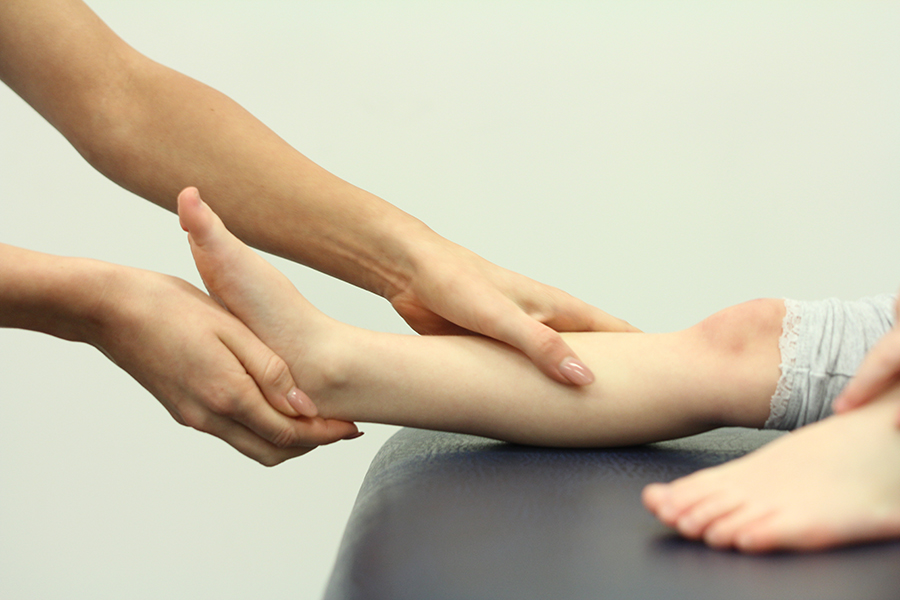Os Trigonum syndrome
Os Trigonum Syndrome is a painful condition that affects the back of the ankle. Os Trigonum Syndrome is common among ballet dancers and those who participate in activities that require lots of plantarflexion of the foot an ankle, such as football.
What is Os Trigonum Syndrome?
Os Trigonum syndrome is a painful condition that affects the back of the ankle. An Os Trigonum is essentially a 'floating bone' called an accessory bone. An Os Trigonum is a part of the talus (ankle bone) that has not fused during development, as a result an Os Trigonum is present in only a few people. An Os Trigonum may be present and cause no symptoms, infact, a person may not be aware that they have one. If an Os Trigonum causes pain it is referred to as Os Trigonum syndrome.
What causes Os Trigonum syndrome?
Os Trigonum syndrome is caused through either injury or overuse. Injuries
that can produce Os Trigonum Syndrome include ankle sprains.
Activities or sports that require the foot and ankle to plantarflex
repeatedly (this is the position the foot is in when the toes point towards
the ground), such as ballet and football can also produce Os Trigonum
Syndrome. Activities that require lots of plantarflexion of the foot and
ankle can cause the Os Trigonum (the floating bone) to become trapped and
pinched in between the heel bone and the ankle bone, which then pulls and
pinches the surrounding soft tissues and leads to inflammation and pain.

What are the signs and symptoms of Os Trigonum syndrome?
The signs and symptoms of Os Trigonum Syndrome include:
- Pain at the back of the ankle that is worse when the foot and ankle are plantarflexed
- Redness and swelling at the back of the ankle
How is Os Trigonum Syndrome diagnosed?
Os Trigonum Syndrome can present with the same symptoms as other conditions, it is therefore important to distinguish Os Trigonum Syndrome from fractures, tendinitis and sprains. Our podiatrists at Chiropody.co.uk are highly trained to diagnose and treat a variety of pathologies relating to the foot and lower limb, they will therefore base their diagnosis on:
- A detailed history
- Careful questioning
- Signs and symptoms
- An examination
To confirm the diagnosis an X-Ray may be requested.
What would podiatry for Os Trigonum syndrome involve?
Podiatry for Os Trigonum Syndrome would first involve an assessment, during which the podiatrist would obtain both a medical history and a history of the problem itself. The podiatrist would then examine the foot and ankle, using their findings to reach a diagnosis. If Os Trigonum Syndrome is diagnosed the following treatment options may be recommended:
- R.I.C.E: rest, ice, compression, elevation
- Anti-inflammatory advice
- Immobilisation
- Steroid injection
- Advice and education
- Surgery to remove the Os Trigonum

Summary
An Os Trigonum is an accessory bone that is present in only a few people in
the population. A person may have an Os Trigonum and not be aware that they
have one until it becomes painful ' this is called Os Trigonum Syndrome.
Os Trigonum Syndrome is quite rare and is usually found in ballet dancers
or those who participate in activities that require lots of plantarflexion
of the foot and ankle, for example, football.
If you think you may have Os Trigonum Syndrome, then visit one of our
podiatrists at Chiropody.co.uk. Our podiatrists will correctly diagnose
your condition and provide you with a treatment plan designed to reduce any
pain and inflammation and improve the function of the foot and ankle.
To arrange an assessment with one our podiatrists please email office@chiropody.co.uk or call 0330 088 4222.
Save 5% by booking an appointment online.



We work with:

Individuals

Organisations

Health professionals
Get in Touch!
0330 088 4222
If you would like to speak to one of our specialists then please complete this form.
We are open 7 days a week








